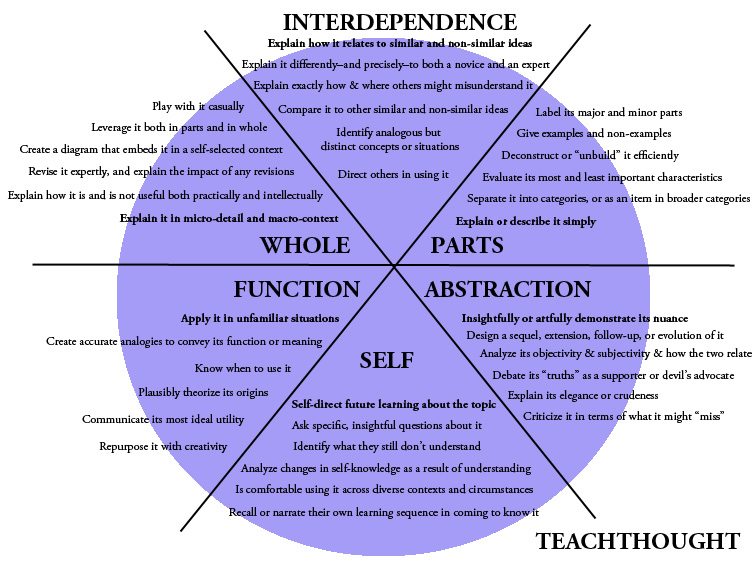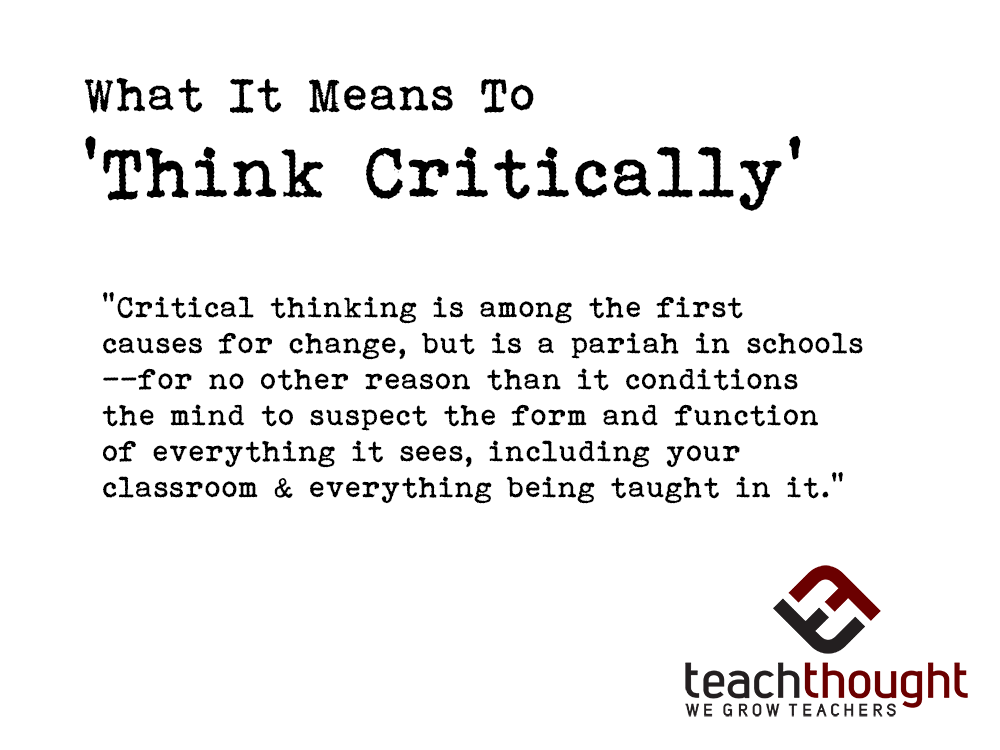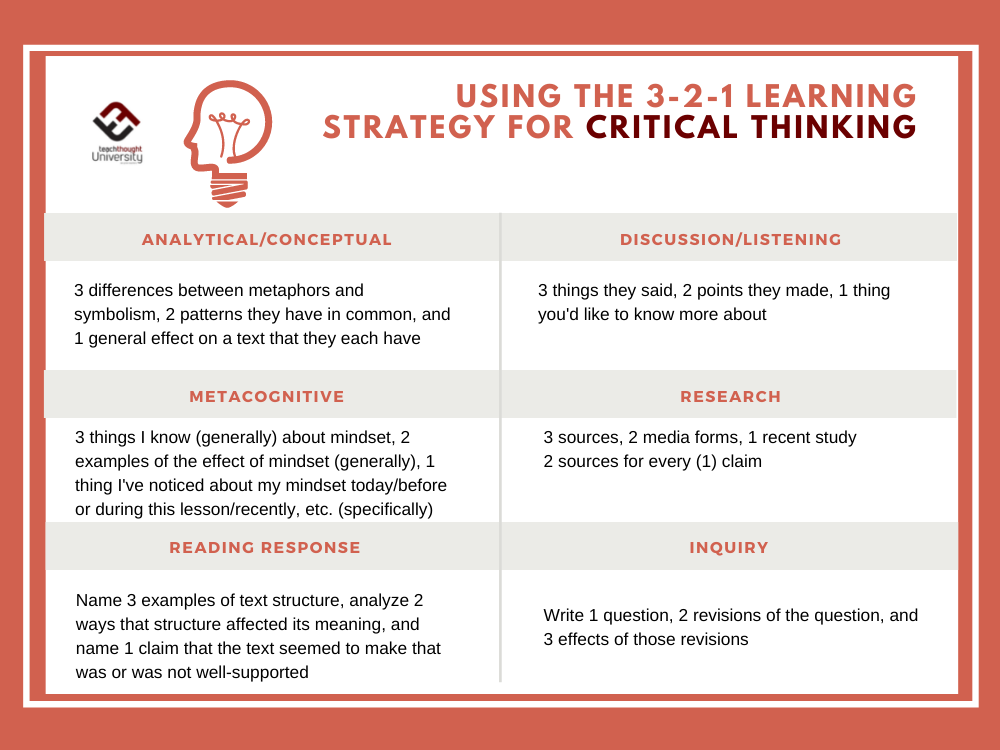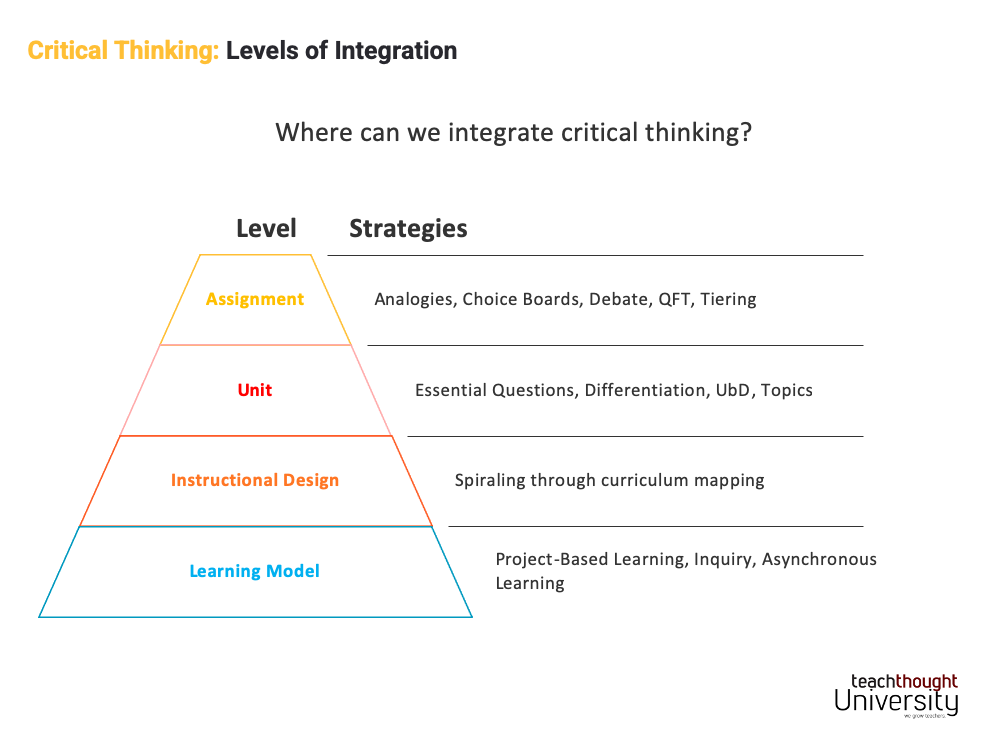Tag: Terry Heick
6 Domains Of Cognition: The Heick Learning Taxonomy
The Heick Learning Taxonomy can be used to guide planning, assessment, curriculum design, and self-directed learning.
What Does ‘Critical Thinking’ Mean?
Critical thinking is the suspension of judgment while identifying biases and underlying assumptions in order to draw accurate conclusions.
Using The 3-2-1 Learning Strategy For Critical Thinking
The 3-2-1 strategy is a simple way to frame a topic or task, making it useful for anything from discussion prompts to…
Establishing A Culture Of ‘Can’ In Your Classroom
it’s important to realize that a “culture” is comprised of tangible factors (students) and intangible factors (curiosity), and ever-present.
What Should A School Do?
If we are not aware of this relative mediocrity, it’s an indictment of our vision. If we are, it is an indictment…
A Better Alternative To Grading Student Writing
For amateurs developing skills, the process is far more important than the product. This is true in science and is true for…
4 Levels Of Integration For Critical Thinking
How can you teach critical thinking? This framework offers a way to integrate critical thinking in your classroom.
The Necessity Of Self-Criticism In Education
Education is ‘actuated’ by teachers. It makes sense that education should also be able to reflect critically on its own performance as…







